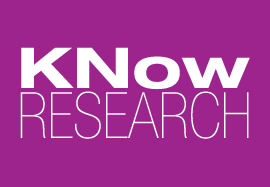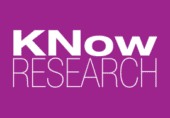Three Ways Qualitative Researchers Can Listen Effectively
Conducting quality qualitative research can seem daunting. It’s labor intensive, and requires a tremendous amount of time, attention to detail, and preparation to get it right. However, at its heart it’s about listening. Here are some key principles I’ve found useful to ensure I listen effectively.
Stage 1: Pre-Listening: Do Your Homework & Immerse Yourself in the Category
- The most helpful tip I can give is to start immersing yourself in the category/brand/topic at hand as soon as the study kicks-off. I find that experiencing the category/brand/topic personally gets me grounded and then everything else just builds on top of it. For instance, recently, I worked with a new cosmetic line, so I went to the store, got an overview from a sales associate, and purchased key products. This way, I could have a deeper level of understanding of the brand firsthand before fieldwork. Additionally, it helped me better connect with participants and probe on key topics I wouldn’t have known about.
- On top of this, I recommend setting-up Google alerts on the brand, topic and competitors, in order stay abreast of the current trends and nomenclature and become more conversant with the topic. Letting this information sink in over time is much better than doing a crash course before the interviews because it gives you more time to digest and process the information to better make connections while doing the research.
Stage 2: In-Situ: Listen Actively
- Each interview should feel like a natural conversation where the participant is the center of the stage. A good rule of thumb is the moderator should talk 20% of the time and participants 80% of the time. Keep in mind, the less you talk, the more they talk.
- As such, it’s critical to learn to be comfortable with silence, especially when the participant is searching for the “right” thoughts to express themselves. Give people time/mental space to process your questions and don’t jump straight in as sometimes the questions we ask are tough.
- Also, make sure to look for opportunities to confirm what you’re hearing from participants and link ideas together throughout the conversation. If something isn’t clear, ask for clarification by expressing interpretations as questions: e.g., “Help me make sure I’m getting this right…”.
Stage 3: Post-Listening: Continue the Conversation
- Once that happens, while the interview is still fresh, it’s critical to debrief with the client and team on feedback, perspective on key insights/takeaways heard in the interviews. Use this time with the clients and team to ensure you are nailing the objectives, fine tune the discussion guide, start collecting relevant themes, and collaborate with the team and clients on analysis.
Above all, remember that participants in qualitative research are first and foremost people. Not consumers or any other labels we put on them.
Approaching them in this way helps the moderator team at KNow listen more effectively and achieve a deeper level of understanding in pursuit of the objectives.
As a researcher, there’s nothing more satisfying than unearthing valuable insights, all the while knowing that all of the participants that helped lead you to that insight have been treated with the utmost respect.
Read more about the importance of participant engagement and respect on GRBN’s Diving Deep into the Qualitative Research Experience article.
And if you’d like to read more about active listening, check out Molly’s recent post Get Active about Listening

